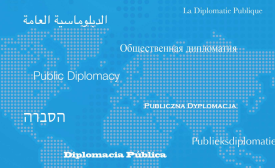evaluation
A perennial question about public diplomacy is, “Does it work?” Congress quite rightly asks that whenever budgets are being scrutinized, and public diplomacy practitioners do their best to provide definitive answers.
Since 9/11, the U.S. Government has invested heavily in technology-based solutions to understanding, informing, and influencing people around the world and across a variety of mediums. Many of these efforts were sponsored by the Defense Department for reasons that include major appropriations by the Congress, a capability (and culture) of contracting, and so on.

The Cultural Awakening in Public Diplomacy is the fourth and latest issue of CPD Perspectives on Public Diplomacy for 2012. Written by R.S. Zaharna, a CPD Research Fellow 2011-2013, the paper addresses the oversight of culture in public diplomacy and makes a case for its growing influence.
In keeping with IMEMO’s longstanding orientation toward economic analysis, “Outlook: 2030” draws heavily on hard economic data, including figures for GDP, labor productivity, R&D investment, currency reserves, population growth and other important metrics... Outlook” even embraces the terms “soft power” and “smart power” coined by Western experts during the past two decades.
Alice Kendrick, professor in the Temerlin Advertising Institute of SMU’s Meadows School of the Arts, has been named to the Global Insights Advisory Council for Brand USA (formerly the Corporation for Tourism Promotion).
Through more aggressive public diplomacy elements such as listening, cultural and educational exchange, advocacy, and broadcasting, Spain is in a good position to foster understanding and goodwill with its Latin American counterparts.







